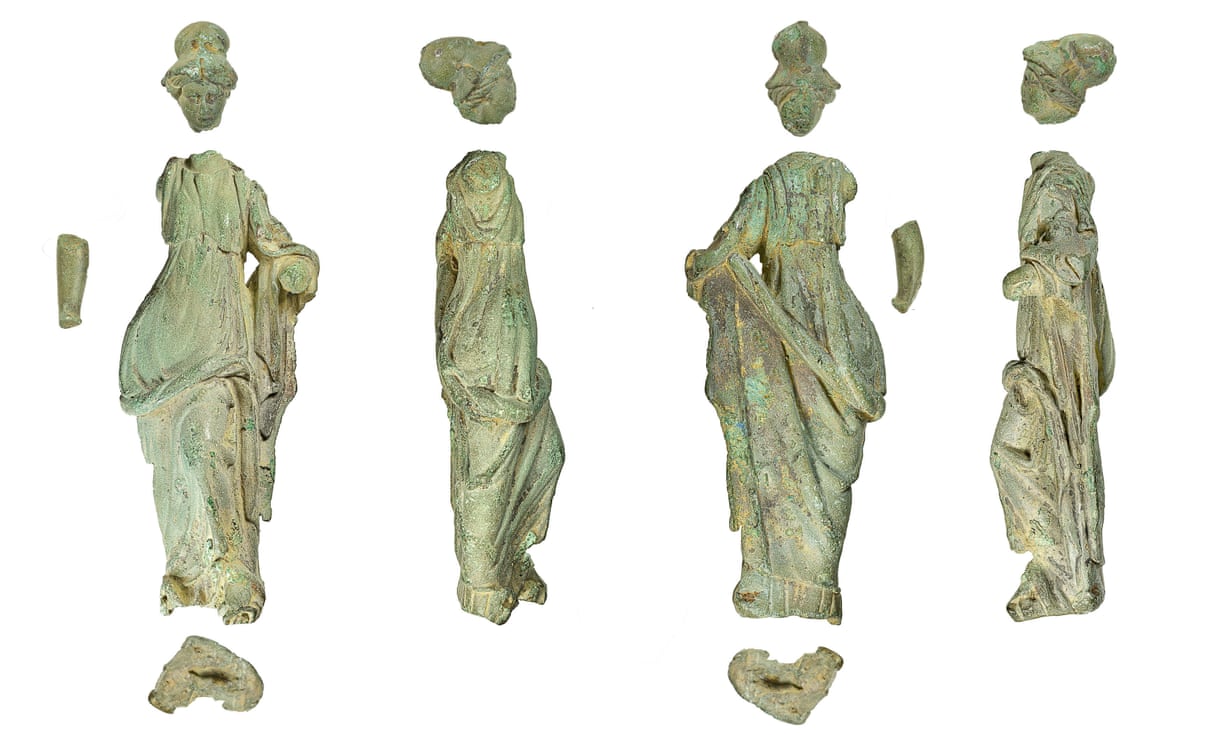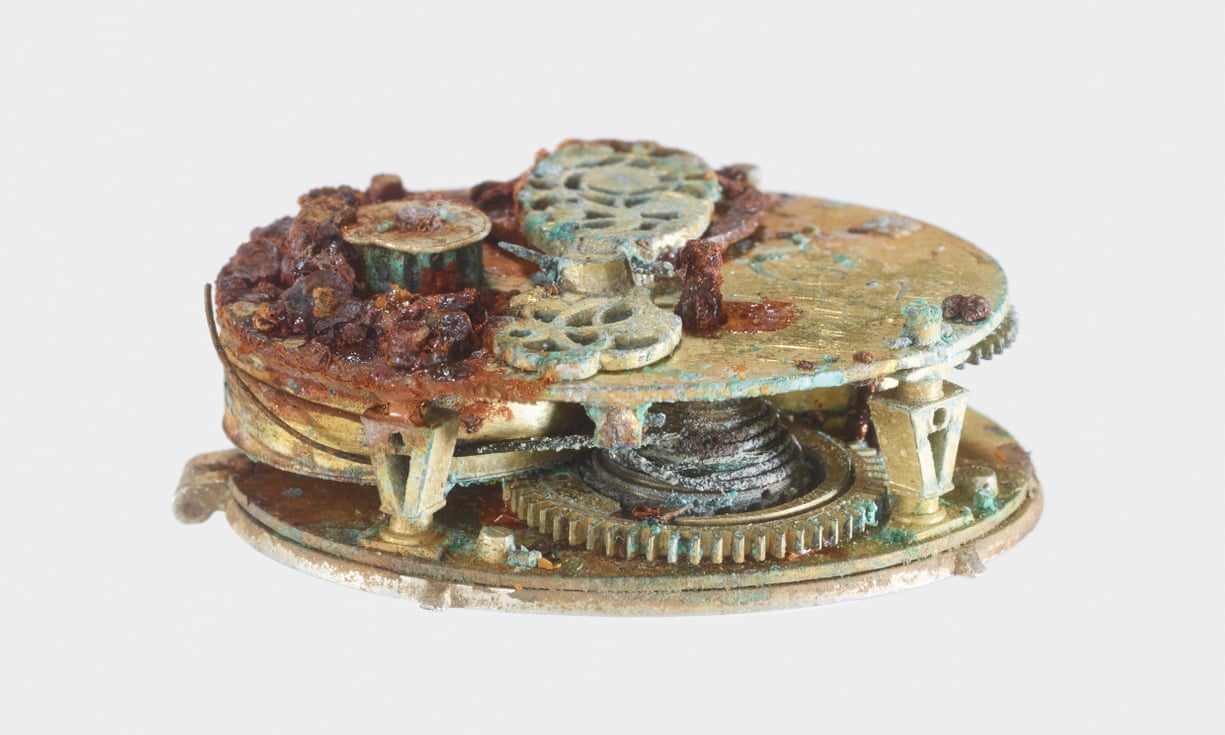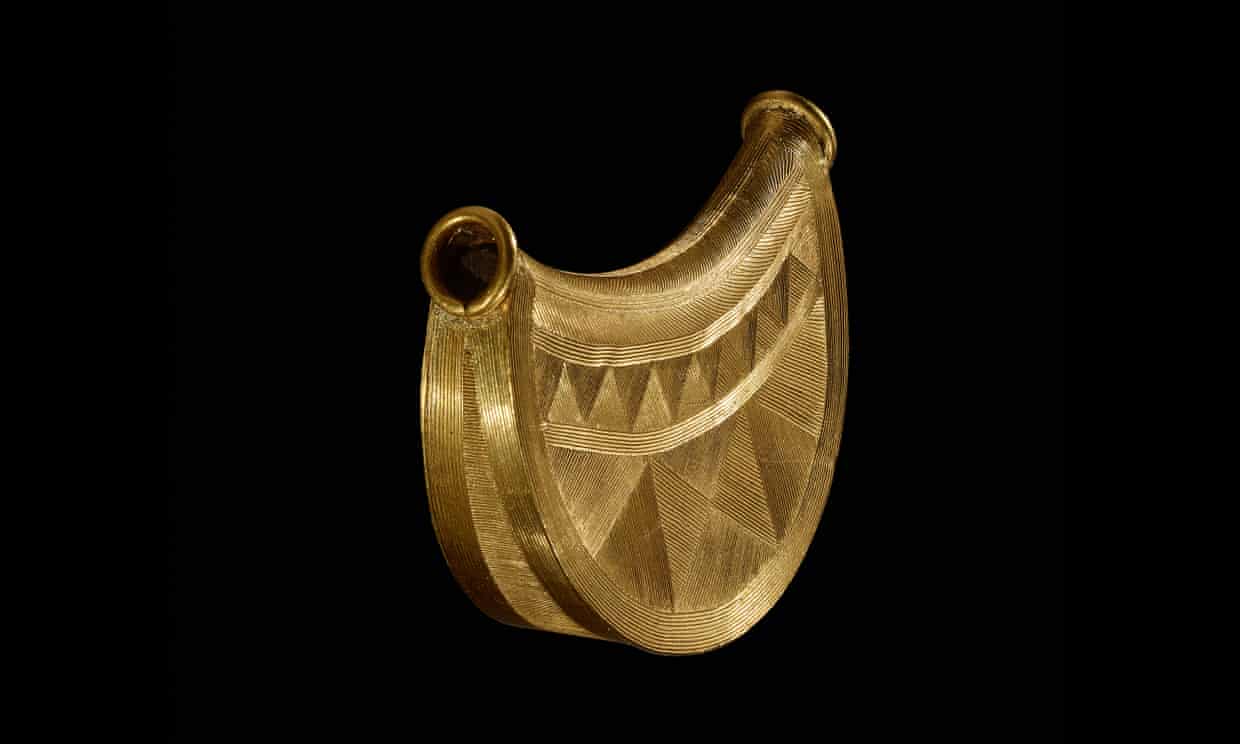DepthReading
Forgotten statue kept in a margarine tub is 2,000-year-old treasure
A 2,000-year-old Roman statuette of a silver-eyed goddess Minerva that for more than a decade was kept in a plastic margarine tub is among a record number of treasure discoveries made by the nation’s army of metal detectorists.
The British Museum on Tuesday revealed the details of 1,267 finds across England, Wales and Northern Ireland, more than there has ever been since the Treasure Act was passed in 1996.
They include everything from prehistoric metalwork to a 17th-century pocket watch – but the goddess with the silver eyes was particularly striking. It was discovered by a detectorist in a field near the village of Hailey, Oxfordshire, more than a decade ago but it was assumed to be a modern copy, nothing more than a curiosity.
The landowner placed the Minerva statuette in a large, empty Flora tub and more or less forgot about it.
This year Len Jackman, a retired lorry driver, asked the farmer if he could search for treasures on his land and was told about the statue in the tub.
“I thought it looked important and old,” Jackman said, but it was not until a few months later, when he had found a number of items nearby, that they agreed he should take it to the local finds liaison officer. “I said ‘I think you’ll be getting a phone call’.”
Anni Byard, the finds liaison officer for Oxfordshire, recalled: “The objects had been left for me on my desk and I picked up the tub and assumed it might be a piece of lead it was so heavy. I unwrapped the tissue paper and it was just ‘wow’… a fantastic moment.
“I knew straight away that it was Roman and it is not something you normally see.
“It’s the first statue of this size I’ve seen in 10 years of doing my job.”
The copper-alloy and lead statuette of Minerva, the Roman goddess of wisdom, dates from the first or second century and would most likely have been on a shrine. Her head has been detached from the body but to even find her head was remarkable, said archaeologists.
“It is such an amazing object and it could make an amazing object for a museum collection if that’s what happens to it,” said Michael Lewis, the head of portable antiquities and treasure at the British Museum.
Other items unveiled by the museum included a shimmering gold bulla, or pendant, which could easily pass as a piece of art-deco jewellery from the 1930s. It was found in the Shropshire Marches and in fact dates from about 3,500 years ago.
“It really is one of the most exquisite pieces of bronze age gold that I’ve seen,” said the curator Neil Wilkin.
It was only the second bronze age gold bulla ever found in England. The other one, found in the 18th century during canal digging in Manchester, was lost so “we hope that it might come out of the woodwork now,” said Wilkin. “If it looked like this someone could easily have thought it was a modern object because it is so beautiful, so pretty.”
About 78,000 archaeological objects, some of it treasure, were recorded in 2017 on a voluntary basis with the portable antiquities scheme. Metal dectorists found 93% of the items, with the biggest numbers in Norfolk, followed by Lincolnshire and Suffolk.
Lewis said the rising figures were down to greater engagement between archaeologists and hobby detectorists, two communities which have not always got on.
In the 1970s and 80s there was a campaign by some archaeologists to stop metal detecting. Lewis said: “There was a misunderstanding on both sides about what the other was up to.
“There was an idea that metal detecting was all about finding things for financial gain and ruining archaeology.
“Over the years it has been realised that there are a lot of people interested in the past, quite happy for the objects to go in to museums. We’re still on a journey, don’t get me wrong … it is very important that the right people are doing metal detecting.”
The finds by metal detectorists were welcomed by the heritage minister, Michael Ellis, who has announced a consultation on how the system could be improved.
Category: English
DepthReading
Key words:



